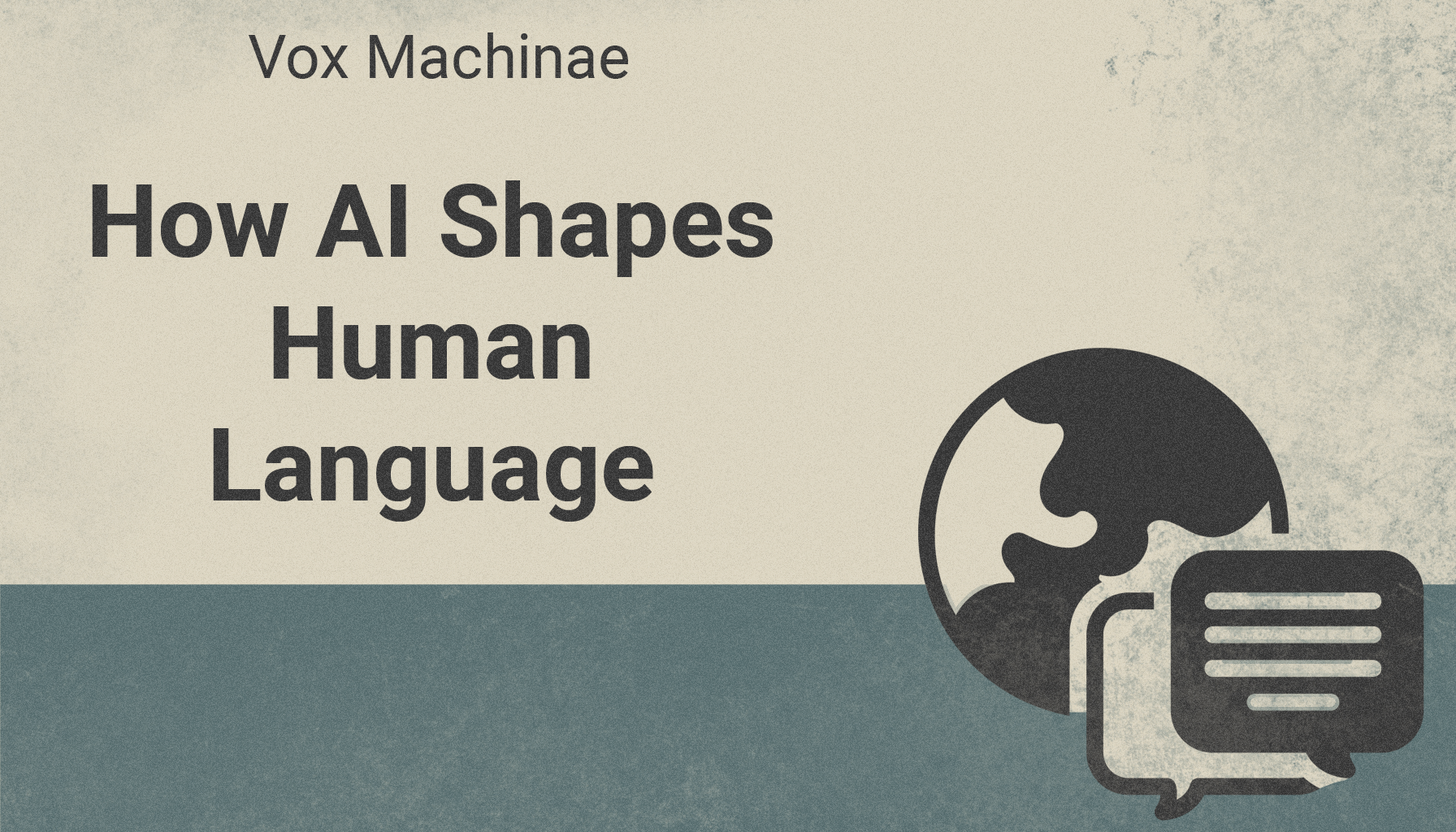The Engineered Evolution of Language
Language has always evolved through cultural shifts, political movements, and technological advancements. However, artificial intelligence has introduced a new force in linguistic change, shaping how words are used, ranked, and understood. Unlike past linguistic evolution, which stemmed from human interaction, AI-moderated speech is structured by engagement algorithms, predictive text, and machine-driven content filtration. As AI influences which expressions gain visibility and which fade into obscurity, it also alters thought, memory, and cultural narrative.
Algorithmic Control Over Language
Language, since time immemorial, evolves through cultural shifts, political movements, and technological advancements. However, the emergence of so-called Artificial Intelligence technologies (more accurately, highly sophisticated generative large language models) have presented a new force in linguistic change. Through AI-Driven moderation, which is structured by engagement algorithms, predictive text, and machine-driven content filtration, it shapes how words are used, ranked, and understood. As AI influences which expressions gain visibility and which fade into obscurity, it functions as an invisible hand that can also alter thought, memory, and cultural narrative.
AI-driven moderation of this kind structures language by determining visibility rather than enforcing outright bans. Words and ideas are ranked based on engagement metrics, making some expressions more accessible while others gradually disappear. AI also moderates discourse through shadowbanning, search engine rankings, and predictive text. Unlike direct censorship, where speech is overtly outlawed, AI-driven speech regulation works invisibly. Users may continue expressing their ideas, unaware that their words are being algorithmically suppressed.
Shadowbanning makes content less discoverable, ensuring that it receives minimal interaction without alerting the creator. Search engines reinforce this by prioritizing content based on advertiser safety policies and algorithmic engagement models. Predictive text further molds communication by guiding users toward AI-preferred phrasing.
Perhaps the most powerful impact of AI-driven moderation is self-censorship. Users adjust their language to avoid penalties, often subconsciously. Online creators modify speech to prevent demonetization, replacing restricted words with euphemisms like “unalive” for suicide or “corn” for pornography. As AI-driven suppression becomes more ingrained, language is preemptively altered even in offline settings, shaping the way people think and communicate.
AI-driven optimization reshapes language by prioritizing engagement and readability over human expressiveness. Journalism, literature, and online discourse increasingly conform to algorithmic readability, favoring structured, predictable content that aligns with search engine rankings and monetization strategies. As machine-readable language dominates, human creativity, ambiguity, and linguistic diversity may decline.
AI’s Influence on Human Thought and Cognition
Just as our language becomes a tool to express our thoughts, so too can our thoughts be impacted by the language we use. As AI-mediated communication alters linguistic norms, it may also restructure cognitive processes, influencing how people engage with complexity, ambiguity, and creativity.
AI-driven communication favors clarity and predictability over emotional nuance and contradiction. Predictive text encourages direct, structured phrasing, discouraging the spontaneity and layered meaning that characterize human speech. Over time, these preferences can shape how individuals process and articulate ideas.
Younger generations, raised in AI-moderated spaces, are particularly susceptible. Studies suggest that Gen Z and Gen Alpha increasingly rely on AI-generated responses for personal and intellectual communication, reinforcing machine-optimized speech patterns. As algorithmic language becomes the default, the spontaneity and depth of human thought may erode.
AI-driven translation tools, while increasing accessibility, risk erasing linguistic and cultural depth. Machine translation prioritizes clarity over cultural nuance, flattening idioms, metaphors, and historical allusions. Over time, AI translation may subtly alter cultural narratives by reinforcing simplified, algorithmically structured interpretations.
AI’s Influence Over Knowledge and Memory
This method of AI-driven content moderation, using AI ranking systems, search personalization, and content moderation, has already begun to shape the way history is recorded and accessed. Unlike traditional censorship, which removes material outright, AI modifies visibility, subtly shaping collective memory.
Search engines prioritize widely accepted narratives while de-ranking alternative perspectives. AI-generated summaries present pre-selected interpretations, filtering which aspects of history remain accessible. Over time, knowledge gaps emerge, not because information is erased, but because it becomes algorithmically invisible.
Moreover, AI-driven content personalization tailors historical narratives to user preferences, reinforcing ideological segmentation. Two people searching the same event may receive vastly different results, based on AI-perceived ideological alignment, further fragmenting public discourse. Research suggests that search engines systematically reinforce past browsing behaviors, deepening cognitive echo chambers.
Resistance to AI-Driven Speech Regulation
As AI continues to impact human language in real time, counter-movements have naturally emerged to reclaim the linguistic humanity that some feel is lacking. Such efforts include coded speech, decentralized platforms, AI-free communication zones, and cultural resistance.
In some cases, users circumvent AI moderation through phonetic alterations (e.g., “w0rld w@r 2”), symbolic substitutions, and indirect references. In politically censored spaces, activists embed dissent into memes, humor, and allegory to evade AI-driven suppression.
Other users are migrating to decentralized platforms, as centralized platforms refine AI moderation. Federated social media, encrypted messaging apps, and blockchain-based forums offer spaces where speech governance is community-driven rather than algorithmically controlled. However, these platforms struggle to compete with corporate networks in reach and accessibility.
Yet other users, largely in intellectual and artistic circles, are reviving offline communication methods, including print media, zines, and in-person discussions. These AI-free spaces preserve expression beyond algorithmic influence, though their reach remains limited compared to online platforms.
Lastly, many artists and writers are actively rejecting AI-structured language, favoring unpredictability and linguistic experimentation. Poets defy AI-friendly syntax, authors embrace non-linear narratives, and musicians revive spoken-word traditions. This pushback is motivated primarily, not by anti-technological sentiment, but by a refusal to let AI dictate human creativity.
The Future of Speech in an AI-Structured World
The rise of AI-moderated language raises critical questions: Will speech conform to machine-readable efficiency, or will resistance preserve linguistic diversity? While AI shapes communication, it does not dictate its future. Human creativity, cultural defiance, and intellectual curiosity will determine whether expression remains organic or bends toward algorithmic uniformity. The struggle for linguistic autonomy is ongoing, and the future of thought depends on how actively societies engage with, resist, or adapt to AI-driven discourse.


